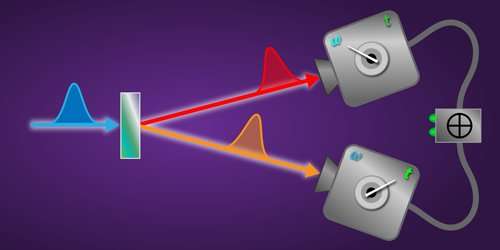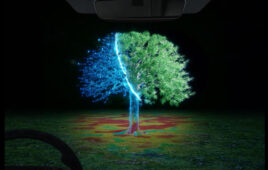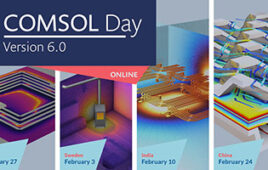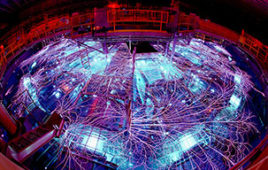
Credit: J.-P. W. MacLean et al., Phys. Rev. Lett. (2018) and APS/Alan Stonebraker
For the first time ever, researchers have captured images of ultrafast photons that are energy-time entangled, which could have direct applications for quantum cryptography and communication protocols.
A team from the Institute for Quantum Computing (IQC) at the University of Waterloo have captured the first images, a development that could lead to the possibility of establishing highly secure communication channels over long distances.
“This technique will allow us to explore all sorts of quantum effects that were inaccessible because the detectors were simply too slow,” Jean-Philippe MacLean, a PhD candidate in the Department of Physics and Astronomy in the Faculty of Science and lead author of the study, said in a statement.
The researchers tapped into a technique called optical gating to capture one of the shortest quantum events possible. Optical gating uses short pulses of light to image the photons in time, allowing the researchers to surpass the limitations in current detectors and measure entangled pairs of photons with a resolution below one trillionth of a second.
“In the last 10 to 20 years, researchers have been interested in exploring and exploiting energy-time entanglement for communication,” MacLean said. “By being able to measure ultrafast entangled photons, our measurement technique opens the door to exploiting entanglement in a whole new regime.”
Energy-time entanglement is a feature of quantum light that occurs when a pair of photons are strongly correlated in both their frequency and time of arrival. Scientists have been exploring exploiting energy-time entanglement for quantum information but lacked the resolution in both energy and time to directly observe it.
However, the new apparatus brings a tool frequently relied upon in classical optics research to the quantum world. In classical optics, the ability to accurately measure both the energy and time features of light on ultrafast timescales has been critical to innovations in laser physics and spectroscopy.
“Ultrafast and quantum represent two frontiers of optical science,” Kevin Resch, interim executive director at IQC and a professor in Department of Physics and Astronomy in the Faculty of Science, said in a statement. “Bringing techniques from one of these areas over to the other opens up exciting possibilities.”
The study was published in Physical Review Letters.




